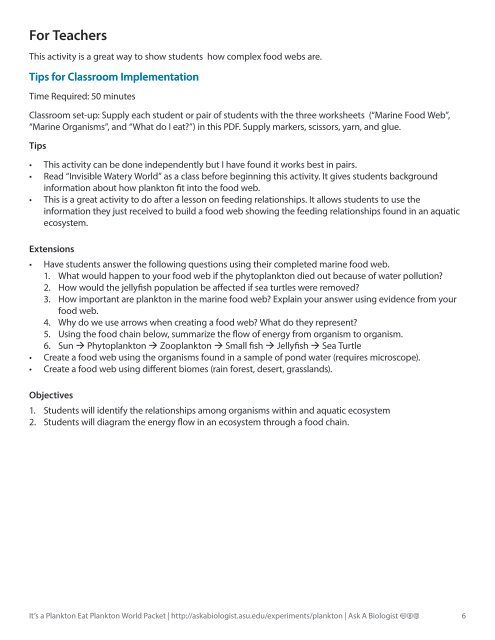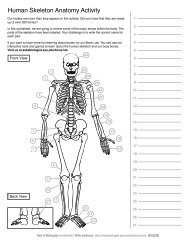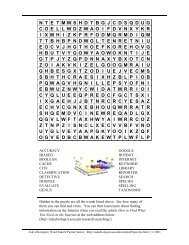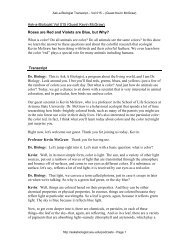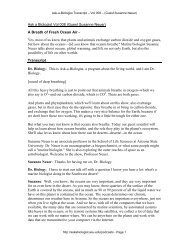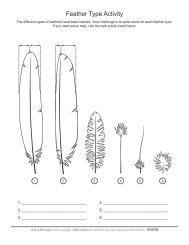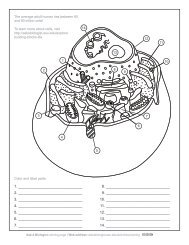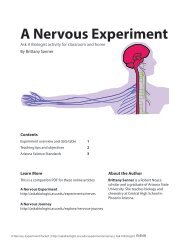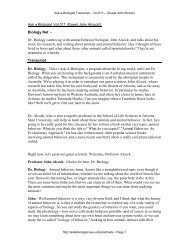Download PDF - Ask A Biologist
Download PDF - Ask A Biologist
Download PDF - Ask A Biologist
- No tags were found...
You also want an ePaper? Increase the reach of your titles
YUMPU automatically turns print PDFs into web optimized ePapers that Google loves.
For TeachersThis activity is a great way to show students how complex food webs are.Tips for Classroom ImplementationTime Required: 50 minutesClassroom set-up: Supply each student or pair of students with the three worksheets (“Marine Food Web”,“Marine Organisms”, and “What do I eat?”) in this <strong>PDF</strong>. Supply markers, scissors, yarn, and glue.Tips• This activity can be done independently but I have found it works best in pairs.• Read “Invisible Watery World” as a class before beginning this activity. It gives students backgroundinformation about how plankton fit into the food web.• This is a great activity to do after a lesson on feeding relationships. It allows students to use theinformation they just received to build a food web showing the feeding relationships found in an aquaticecosystem.Extensions• Have students answer the following questions using their completed marine food web.1. What would happen to your food web if the phytoplankton died out because of water pollution?2. How would the jellyfish population be affected if sea turtles were removed?3. How important are plankton in the marine food web? Explain your answer using evidence from yourfood web.4. Why do we use arrows when creating a food web? What do they represent?5. Using the food chain below, summarize the flow of energy from organism to organism.6. Sun Phytoplankton Zooplankton Small fish Jellyfish Sea Turtle• Create a food web using the organisms found in a sample of pond water (requires microscope).• Create a food web using different biomes (rain forest, desert, grasslands).Objectives1. Students will identify the relationships among organisms within and aquatic ecosystem2. Students will diagram the energy flow in an ecosystem through a food chain.It’s a Plankton Eat Plankton World Packet | http://askabiologist.asu.edu/experiments/plankton | <strong>Ask</strong> A <strong>Biologist</strong> 6


